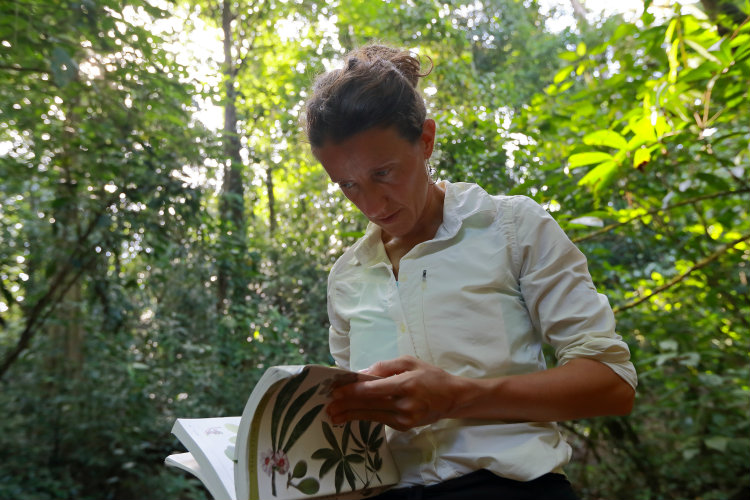Regrown forests combat global carbon reduction

The question of how humanity can reduce climate change has been tackled by a Stirling expert as part of a ground breaking international forest ecology study.
Dr Daisy Dent, a lecturer in Tropical Ecology at the University of Stirling, was the only scientist in the UK to contribute to the largest study of its kind led by Wageningen University in the Netherlands.
Research published in Nature journal revealed the resiliency of forests regrown after tropical forest clearance and suggests their potential to absorb carbon could be the answer to reducing global carbon emissions and increasing carbon intake.
As recent climate talks in Paris noted, carbon reduction is a matter of global urgency. While attention has focused on the ability of older tropical forests to store carbon, it appears forests that re-grow after forest clearance can absorb large amounts of carbon.
Dr Daisy Dent of the School of Natural Sciences, said: “Carbon uptake is surprisingly fast in neotropical forests regenerating on abandoned pastures or abandoned agricultural fields. After just 20 years, these forests have recovered an average of 122 tonnes of aboveground biomass per hectare. This translates to an uptake of 3.05 tonnes of carbon per hectare per year, which is 11 times the rate of mature forests.”
The collaborative research analysed almost 1500 forest plots from 45 sites across Latin America. Dr Dent, who is also a Research Associate at the Smithsonian Tropical Research Institute in Panama contributed data from secondary forest plots in central Panama that range in age from 20 to 120 years.
The study showed that secondary forests are highly productive and resilient but rates of biomass recovery differed dramatically with water availability. Carbon absorption was highest in areas with high rainfall and water availability throughout the year, in contrast soil fertility and the amount of forest cover in the surrounding landscape were less important to biomass recovery.
Dr Dent said: “To mitigate climate change we need to reduce carbon emissions and increase carbon uptake. We hope that this study highlights the role that secondary forests can play in climate change mitigation. We need policies that protect older tropical forests and promote natural forest regrowth in deforested areas, particularly in areas with high rates of carbon uptake. Natural regrowth is a cheap and natural solution to climate change.”
Media enquiries to Corrie Campbell, Communications Officer on 01786 466 169 or c.r.campbell@stir.ac.uk.
Notes for editors
- Background information
Biomass resilience of Neotropical secondary forests is published in Nature doi:10.1038/nature16512. For more information visit the Nature website.
2ndFOR
This research is a product of the 2ndFOR collaborative research network on secondary forests. It involves 65 researchers from 15 different countries. The network focuses on the ecology, dynamics, and biodiversity of secondary forests, and the ecosystem services they provide in human-modified tropical landscapes. The 2ndFOR network is coordinated by Prof. Lourens Poorter and Prof. Frans Bongers (Wageningen University, the Netherlands) and Dr. Danaë Rozendaal (University of Regina, Canada).
Secondary tropical forests
Secondary forests are forests that regrow after nearly complete removal of forest cover for agricultural use (for shifting cultivation or cattle ranching). Currently over half of the world’s tropical forests are not old-growth, but naturally regenerating forests of which a large part is secondary forest.
